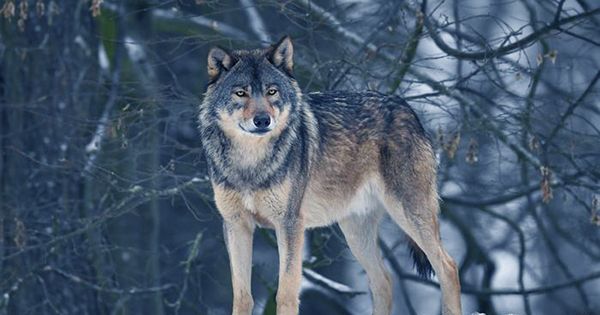Researchers have discovered the remains of the world’s first domesticated wolf in a cave in southwestern Germany.
Describing the fossils in the journal Scientific Reports, they explained that the specimens could not classified as ancient wolves or modern dogs, but “contemporary and ancient dogs and most wolves have almost the full breadth of genetic diversity.” It generally accepted that wolf rearing took place in Eurasia about 116,000 years ago, although it not known whether this process began in a single site or in several sites simultaneously. Regardless of what is going on elsewhere, though, that Germany now inhabited by ginseng caves had already begun to stalk wolves at this time and may therefore is the world’s first dog breeder.
This small but huge notable cave is located in the Hegau Jura region, where the Magdalenian culture lived at the end of the Pleistocene. After analyzing the export, genetics, and isotopes of Gnirshöhle canid, the researchers noticed that the specimens appeared to have originated from multiple ancient wolf lineages, including one that did not match any other canine lineage from the region. This suggests that cave dwellers could raise and raise wolves from a number of sub-populations, some of which originated outside Europe. The results of the isotope analysis indicate that the canines ate a low-protein diet that differed greatly from that of the wild wolves in that they fed by humans.
“Thus, we consider the representation of wolves in the early stages of wolf rearing at Gnirshöhle – facilitated by humans who initially actively provided a food source for domesticated animals,” the researchers explained. Commenting on these studies, study author Chris Bauman explained, “The animal’s closeness to humans and rather a limited diet suggests that wolves were already domesticated and kept like dogs 16,000 to 14,000 years ago.” It should noted, however, that Gnirshöhle may not be the only place for wolf rearing now, and researchers are keen to point out that a similar process could occur elsewhere.A close examination of the samples’ mitochondrial genomes led the team to identify specific wolf and dog genes that they were able to trace back to a common ancestor who lived about 135,000 years ago. Although it does not necessarily mark the point adopted at home, researchers say it provides a “top time limit for such events.” The study authors summarize their findings by stating, “Although we cannot address the question of the loneliness of domestic phenomena, our results support the hypothesis that the Hegau Jura was a potential center for domesticated domestic wolves.”















